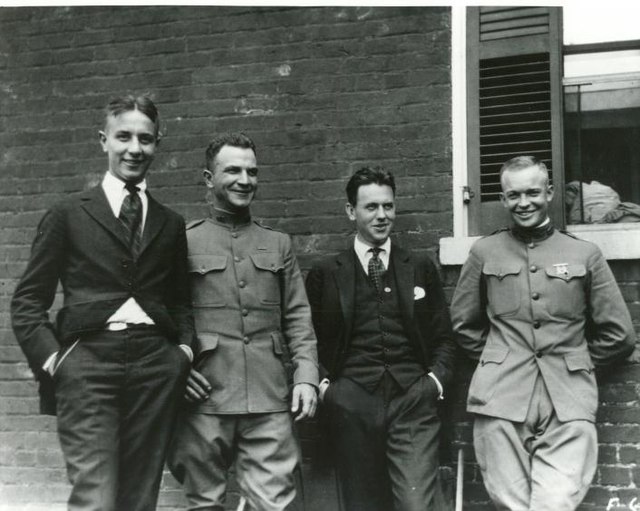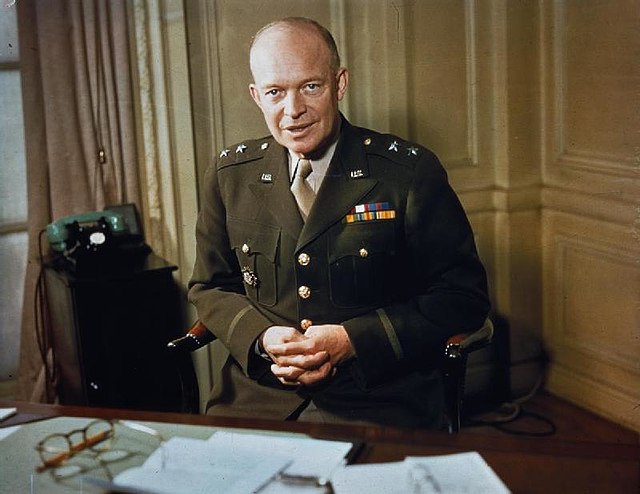Eisenhower's farewell address
Eisenhower's farewell address was the final public speech of Dwight D. Eisenhower as the 34th President of the United States, delivered in a television broadcast on January 17, 1961. Perhaps best known for advocating that the nation guard against the potential influence of the military–industrial complex, a term he is credited with coining, the speech also expressed concerns about planning for the future and the dangers of massive spending, especially deficit spending, the prospect of the domination of science through federal funding and, conversely, the domination of science-based public policy by what he called a "scientific-technological elite". This speech and Eisenhower's Chance for Peace speech have been called the "bookends" of his administration.
President Dwight Eisenhower delivers his farewell address.
A draft of the farewell address, showing handwritten edits.
Dwight David Eisenhower, nicknamed Ike, was an American military officer and statesman who served as the 34th president of the United States from 1953 to 1961. During World War II, he was Supreme Commander of the Allied Expeditionary Force in Europe and achieved the five-star rank as General of the Army. Eisenhower planned and supervised two of the most consequential military campaigns of World War II: Operation Torch in the North Africa campaign in 1942–1943 and the invasion of Normandy in 1944.
Official portrait, 1959
The Eisenhower family home in Abilene, Kansas
Eisenhower (far right) with friends William Stuhler, Major Brett, and Paul V. Robinson in 1919, four years after graduating from the United States Military Academy at West Point
Eisenhower as a major general, 1942






